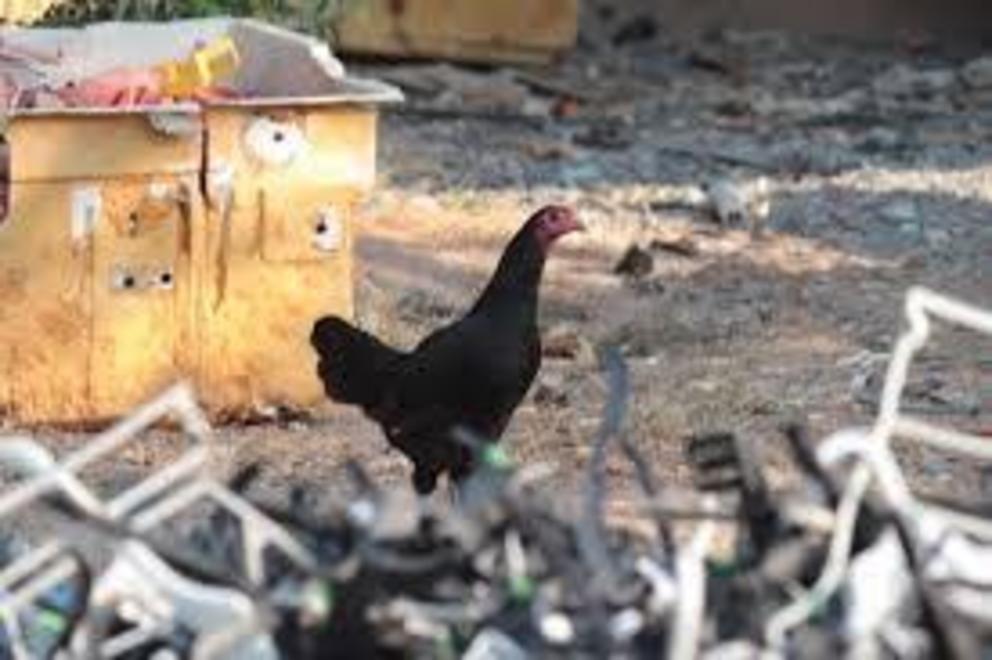‘Alarming’ levels of toxins found in free-range eggs near dumpsites globally
Banner image: A free-ranging chicken amid metal scrap in Thailand. The mismanagement of ash from incineration and metal production is another serious public health issue.
- A recent review paper identifies toxic chemicals, including dioxin, in free-range eggs on five continents — likely the result of nearby open burning and incineration of plastic and e-waste containing legacy and banned chemicals, as well as unregulated toxins.
- Researchers tested eggs produced near e-waste sites, dumpsites, and waste incinerators and found high levels of globally banned flame retardant chemicals, including brominated dioxins which are toxic and pose a serious risk to human health and the environment.
- Experts note that while some brominated flame retardants (BFRs) are regulated and banned, others haven’t been. Critics also note that the chemical industry often replaces individual banned chemicals with other unregulated but still potentially toxic chemicals in the same family, a process known as “regrettable substitutions.”
- Experts are calling for stronger regulation to prevent release of known toxins, not by banning one chemical at a time, but by addressing entire classes of chemicals. But a just completed UN Stockholm Convention meeting deferred listing and monitoring brominated and mixed brominated-chlorinated dioxins.
A recent study has found “alarming” levels of toxic chemicals in free-range eggs around the globe. The finding is based on more than a decade of analyses of eggs on five continents, which detected free-range eggs contaminated with globally banned flame retardants, and particularly brominated dioxins, which are toxic to human health and the environment.
E-waste sites, dumpsites and waste incinerators are key sources of these pollutants, with eggs tested in their vicinity found to be severely contaminated by chemicals released when plastic waste is burned. Eggs sampled near an e-waste site in Ghana in 2019, for example, had levels of brominated and chlorinated dioxins 200 times higher than the safety standard for food. Intentional production and use of dioxins has been eliminated or severely restricted worldwide under the U.N. Stockholm Convention on Persistent Organic Pollutants (POPs).
The study, published in the journal Emerging Contaminants, was led by the International Pollutants Elimination Network (IPEN), along with the Czech nonprofit Arnika and an international team of scientists. The research was far-reaching, with free-range egg toxicology data gathered in many developing countries, and countries with economies in transition, in Africa, Asia, North and South America and Europe.
The findings are extremely concerning, the study authors say, as eggs are an important source of protein in low- and middle-income countries, with the study indicating these toxic chemicals are entering the food chain.
“We know from decades of studies that dioxins are some of the most toxic chemicals that we are aware of,” says Therese Karlsson, a science and technical advisor at IPEN. “I would say it’s extremely concerning from a human health aspect.”
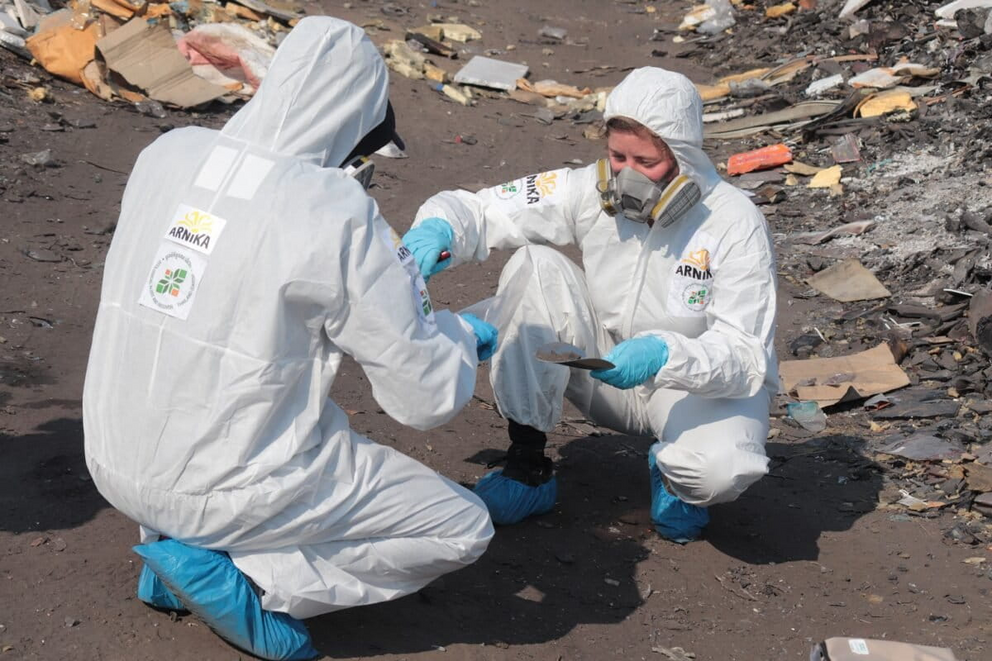 Researchers working with IPEN and Arnika have sampled eggs from countries around the globe for more than a decade. Their findings revealed “alarming” levels of dioxin contamination.
Researchers working with IPEN and Arnika have sampled eggs from countries around the globe for more than a decade. Their findings revealed “alarming” levels of dioxin contamination.
Brominated flame retardants and brominated dioxins are linked to a range of health impacts, including endocrine disruption, reproductive toxicity, neurodevelopmental impairment, damage to the immune system and cancer.
While chlorinated dioxins and some flame retardants are already banned under the Stockholm Convention, critics note that there is currently a major blind spot in the international agreement, which fails to regulate and monitor brominated and mixed brominated-chlorinated dioxins. The authors are calling for brominated and mixed brominated-chlorinated dioxins to be listed under the convention, with a global phaseout of the use of all brominated flame retardants. Some brominated flame retardants, such as polybrominated diphenyl ethers (PBDEs), hexabromocyclododecane (HBCDD) and hexabromobiphenyl (HBB), are already banned.
“The most important thing that the paper shows is the importance of listing and regulating brominated and brominated chlorinated dioxins,” says Jindřich Petrlík, the paper’s lead author and a scientist with Arnika and IPEN. “In some eggs, we found that brominated dioxins and furans contribute more to dioxin toxicity than chlorinated ones.” Chlorinated dioxins are among the most toxic of substances known on Earth.
At a recent meeting of the Stockholm Convention’s POP Review Committee, which concluded Friday, Oct. 3, a decision on approving the risk profile of brominated dioxins was postponed until the end of next year. The risk profile would be the first step toward listing brominated dioxins and mixed brominated-chlorinated dioxins under the convention.
That delay means these harmful chemicals may not be subject to global regulation by the Stockholm Convention until the process is complete 2-4 years from now, Petrlík says. In the meantime, free-range eggs and other food products contaminated due to their proximity to poorly monitored dumpsites will continue posing public health risks.
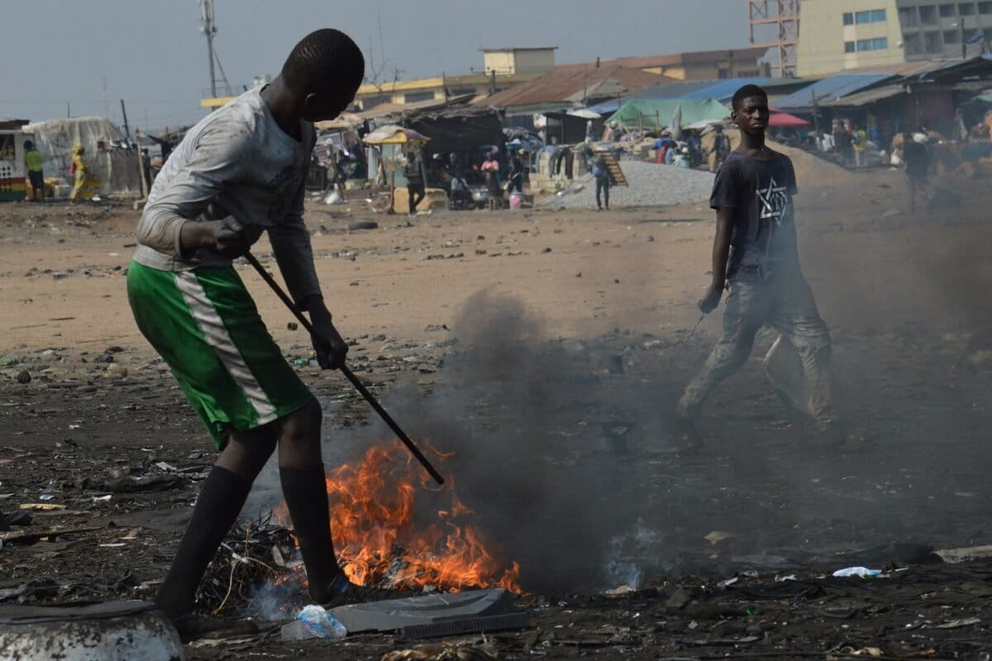 Eggs with the highest-recorded levels of brominated and chlorinated dioxins were found at an e-waste scrap yard in Agbogbloshie, Ghana.
Eggs with the highest-recorded levels of brominated and chlorinated dioxins were found at an e-waste scrap yard in Agbogbloshie, Ghana.
A more wide-ranging problem?
Urgent efforts are needed to tackle release of dioxins at the production, recycling and waste management phases, experts say.
For Lisa Thompson, a professor at the University of California who was not involved in the research, the study demonstrates that eggs can be a “major source of brominated flame retardants,” but she says she believes the contamination could be a more wide-ranging problem.
“Targeting heavily contaminated sites might lead people to think this is a localized problem,” she writes in an email. “In my view, the next step would be to test eggs from chickens from households where people practice open burning of household waste, which often includes plastic bottles and single use bags.”
Household open burning of plastic and other waste is a major and often unrecognized problem that experts have described as an “urgent global health issue.”
Petrlík adds that beyond e-waste and dumpsites, pyrolysis facilities — using a recently developed plastic disposal method the petrochemical industry has dubbed “advanced recycling” — are a potentially problematic source of release of these chemicals.
Though evidence is still limited, Petrlík says plastics pyrolysis facilities “might be a problem with regards to contamination or pollution with persistent organic pollutants such as brominated dioxins.” More studies are required, even as the industry rushes to open advanced recycling plants in the U.S., China, Japan, the EU, Mexico and Brazil.
Another pressing public health issue is the mismanagement of ash from incineration and metal production. IPEN studies, and others, show that this ash can be highly contaminated with chemicals. Bottom ash, for example, the leftover residue from municipal waste burning, is widely used as a construction material.
“Unfortunately, bottom ash can spread brominated dioxin contamination very widely,” says Petrlík.
The study authors also highlight that efforts to replace banned flame retardants with other “novel” flame retardant chemicals has not solved the problem; these, too, are often toxic but are as yet unregulated replacements referred to as “regrettable substitutions.” These new chemicals can contain toxins that show up in eggs, often at higher levels. Because the original and the substitutes are chemically similar, they very frequently come with equal health concerns. The result, critics say, is a game of whack-a-mole as industry races to outmaneuver regulators by shifting repeatedly from one regrettable substitution to the next.
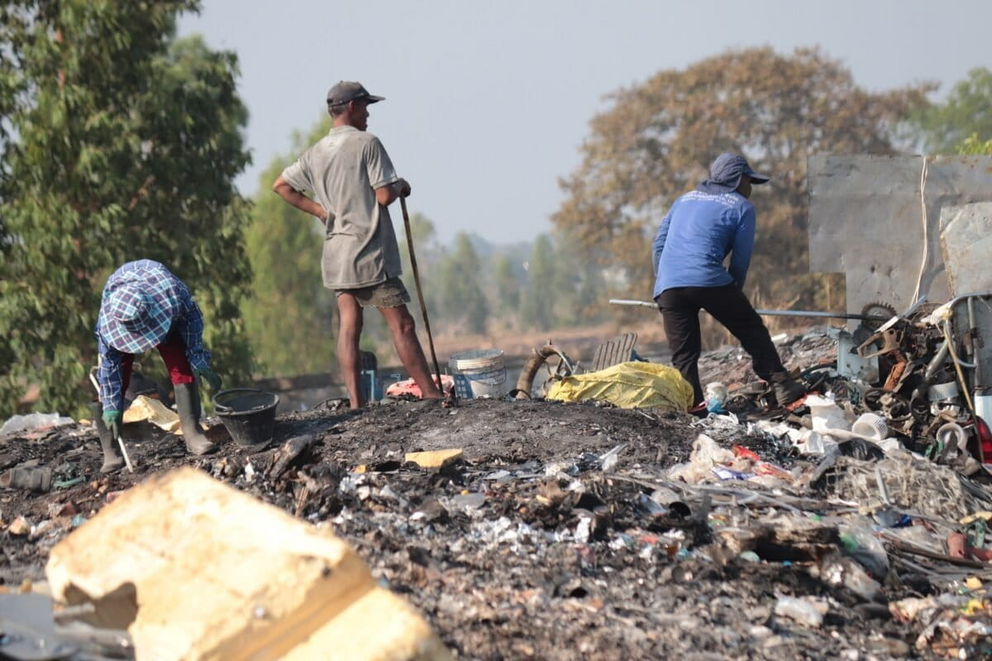 Egg contamination is significant around e-waste sites, dumpsites and waste incinerators. Experts are calling for increased regulation of the release of brominated and chlorinated dioxins and bans on the use of all brominated flame retardants, including no
Egg contamination is significant around e-waste sites, dumpsites and waste incinerators. Experts are calling for increased regulation of the release of brominated and chlorinated dioxins and bans on the use of all brominated flame retardants, including no
“That raises the question if it wouldn’t be better to look at regulating these chemicals in groups,” Petrlík says. “So, for example, banning [all] brominated flame retardants might be going to the point to target the really harmful chemicals.”
Beyond calling for regulation of brominated dioxins and mixed brominated-chlorinated dioxins, IPEN and its partners also emphasize the need to eliminate the use of harmful chemicals during production and enforce effective recycling of plastic and e-waste, as well as stricter controls of all brominated flame retardants. They assert that the export of plastic and e-waste from the Global North to the Global South should end.
“Shipping plastic waste to developing countries is really ‘exporting a problem’ that is unmanageable,” agrees Thompson. “The [Stockholm] Committee should take actions to ban [all] brominated flame retardants, which are similar to already-banned pollutants, and which have been shown to be carcinogenic and cause harm to the reproductive and endocrine systems.”
Roland Weber, an environmental consultant and co-author of the recent paper, says the European Union’s flame retardant strategy, which aims to restrict the use of these chemicals, is a “bold” step in the right direction.
He calls the decision to postpone listing and monitoring brominated dioxins and mixed brominated-chlorinated dioxins as a “bit unfortunate.” That decision, he suggests, is based on some committee members having the perception that there is a lack of robust data proving harmful human exposure.
“Additional monitoring should be able to bring the needed data [to the regulatory committee], and I hope that the research community will be able to conduct such a study or studies within a year.”
In Petrlík’s view, the Stockholm Convention POP committee postponement is concerning because it means the lack of regulatory oversight of these toxic chemicals will likely go on for years. It is a “big defeat [adding to the] continuing contamination of our planet.”
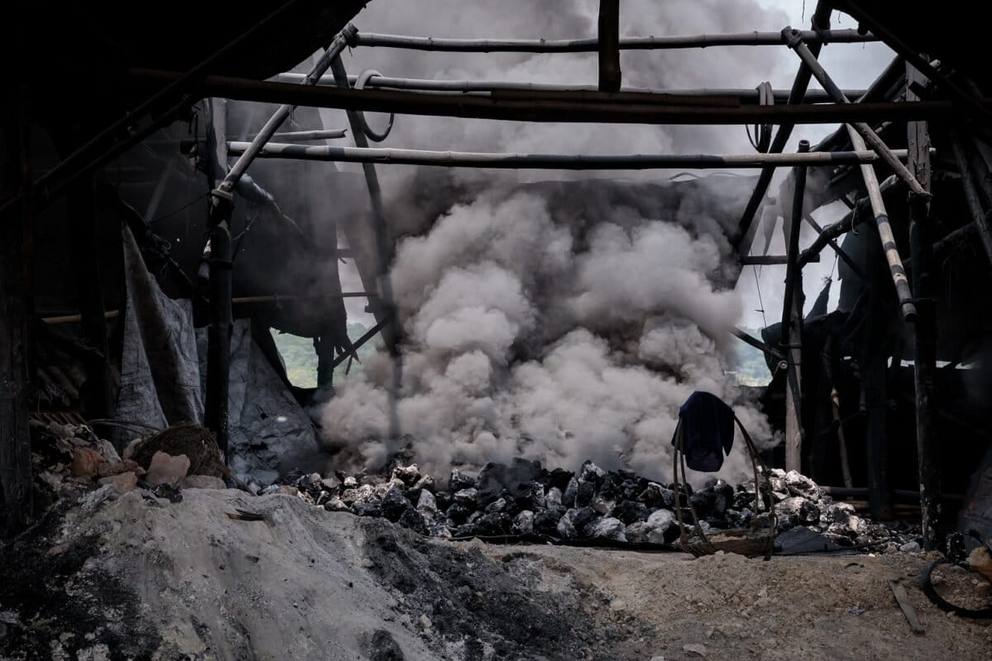 A lime kiln in Karawang, Indonesia, where plastic is used as a fuel source. Burning of plastics as fuel or incinerating waste can release dioxins and can contaminate soils and food sources.
A lime kiln in Karawang, Indonesia, where plastic is used as a fuel source. Burning of plastics as fuel or incinerating waste can release dioxins and can contaminate soils and food sources.
Citation:
Petrlik, J., Bell, L., DiGangi, J., Lucero, A., Kuepouo, G., Ochola, G., … Weber, R. (2025). Review of Brominated flame retardants and Polybrominated Dibenzo-P-Dioxins and Dibenzofurans in eggs and contamination sources. doi:10.2139/ssrn.5399284
Sharkey, M., Harrad, S., Abou-Elwafa Abdallah, M., Drage, D. S., & Berresheim, H. (2020). Phasing-out of legacy brominated flame retardants: The UNEP Stockholm convention and other legislative action worldwide. Environment International, 144, 106041. doi:10.1016/j.envint.2020.106041

